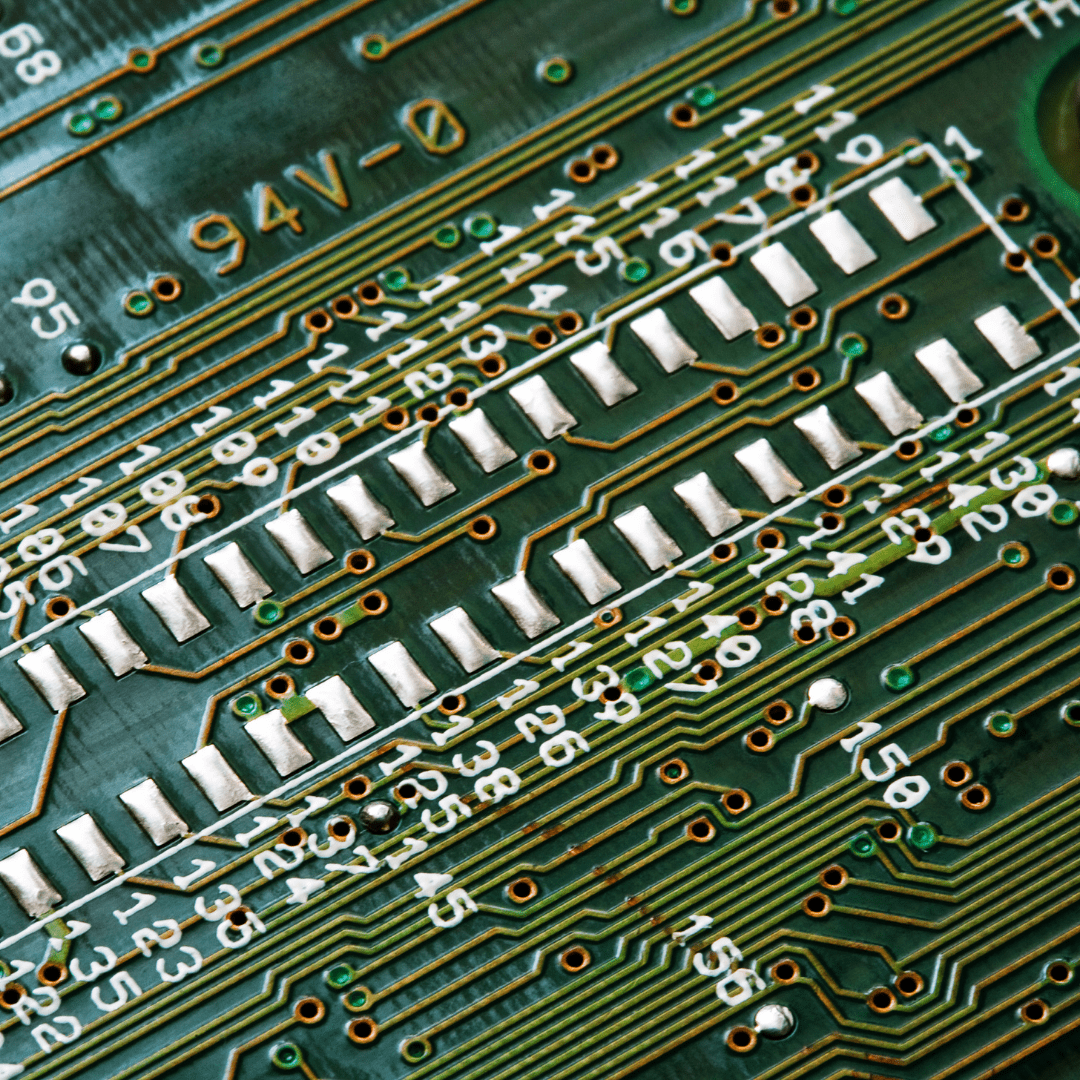At Garfield, we often talk about gold in jewelry, bullion and even dental crowns. But did you know there’s also a significant amount of gold used in electronics? Electronics accounted for about 5% of the gold used in America in 2023, according to the USGS Mineral Commodity Summaries for 2024. There’s gold in mobile phones, computers, TVs and more.

Why Is Gold Used in Electronics?
There are many reasons that gold works wonders in various components of electronics. First of all, gold is an efficient conductor of electricity, allowing for transmission of electrical signals without a significant loss of energy. Gold is also very resistant to corrosion and oxidation, even in unfavorable environmental conditions, which is paramount for long-term reliability.
Gold is highly malleable, so it can easily be shaped and formed into thin sheets, wires and very small pieces without breaking, which is perfect for the creation of intricate circuitry. And last but not least, gold is compatible with other metals that are commonly used in electronics, like copper and silicon. Gold forms stable connections with these other materials, which is great for functionality and longevity in electronic devices. For all of these reasons, we use gold in connectors, connecting wires, and connection strips in electronics, among other things.
Gold vs Copper
But why use gold when we could use copper in electronics? Copper is a much cheaper option and a better conductor of electricity. Wiring in general predominantly uses copper, but gold is favored specifically in electronics because it has a few distinct advantages. Gold is more ductile and malleable, making it easier to work with. Gold also has less reactivity with other materials than copper or silver, and it won’t tarnish as quickly.
Where Is the Gold in My Mobile Phone?
Gold in mobile phones and computers is primarily located within the circuit board or “motherboard.” The motherboard stores all of a device’s essential components. This is where all of the main components and external peripherals connect so that they can communicate.
Gold is used in the connectors of circuits and the memory chip within the motherboard. These areas require resilient materials that will not corrode over time, hence the use of gold.
Computers have even larger motherboards than cell phones, containing more gold. Television sets contain gold as well, along with early versions of cameras, radios, media players and game consoles.
How Much Gold Is in the Average Mobile Phone?
Apple iPhones typically contain more gold than other brands of smartphones. The exact amount varies depending on the model, but on average, an iPhone contains around 0.034 grams of gold, 0.34g of silver, 0.015g of palladium, and less than one-thousandth of a gram of platinum.
As far as precious metal value, an individual cell phone doesn’t amount to much. At today’s prices, the average amount of gold in an iPhone is worth about $2.50. But on a societal level, this can really add up – Apple sold 235 million iPhones in 2023!
The Issue of E-Waste
Historically, recycling of electronics has not looked great. The U.S. alone generates about 6.9 million tons of e-waste each year. Globally, the World Economic Forum estimates that we’ll produce around 81.6 million tons of e-waste yearly by 2030. Of all this material, only about 17.4% of e-waste is being properly recycled worldwide.
But don’t worry, there’s hope! The concept of ‘urban mining’ just might be the wave of the future.

Untapped Potential – ‘Urban Mining’
A lot of research and interest in recovering precious metals from unwanted mobile phones and other electronics has emerged in recent years, as studies have shown the major potential that it could have in meeting our demands for these materials.
According to Business Insider, small startup companies are taking advantage of the untapped potential of the e-waste industry, making as much as $85,000 per day recycling old electronic circuit boards. And there’s a good chance that these types of initiatives will continue to grow. Globally, there’s a projected $55-$60 billion worth of precious metals just sitting inside abandoned circuit boards!
Gaining Momentum
A new study from researchers in China and the Netherlands projects that repurposing or recycling rare earth metals from old cellphones, hard drives, electric motors and turbines could meet as much as 40 percent of the demand for the metals in the United States, China and Europe by 2050.
The biggest challenge in tapping into the “urban mines” of electronic waste is coming up with efficient ways to gather and process the electronics, and making e-waste recycling more easily accessible to the masses. Hopefully these aspects of e-recycling will see advancements in years to come.
Recycling Resources
If you have unwanted electronics that you need to recycle, there are likely several convenient options in your area. Make sure that the recycler you choose is e-Stewards certified – this guarantees that the valuable materials, like gold, silver, copper, lithium, aluminum, and palladium, as well as toxic materials like lead, mercury, and cadmium are extracted and put back into the marketplace.
Recycling your e-waste may be as easy as a drop-off at Staples or Best Buy. Electronics Recyclers International (ERI) partners with both of these chains to collect almost all electronics for free. ERI is one of the largest electronic recyclers in the country, processing 100,000 tons per year!
Although Garfield currently does not accept electronic scrap, we fully support and encourage responsible disposal of your unwanted electronics. And if you have any other form of unwanted precious metal scrap – including jewelry, coins, pins, buttons, silverware, dental crowns and more – we’ve got you covered!
Established in 1892, Garfield will get you the most for your gold, silver, platinum, and palladium, and we offer the industry’s bet customer service. Call us today at 888-677-2362 to find out why Garfield is a premier precious metals refinery!

